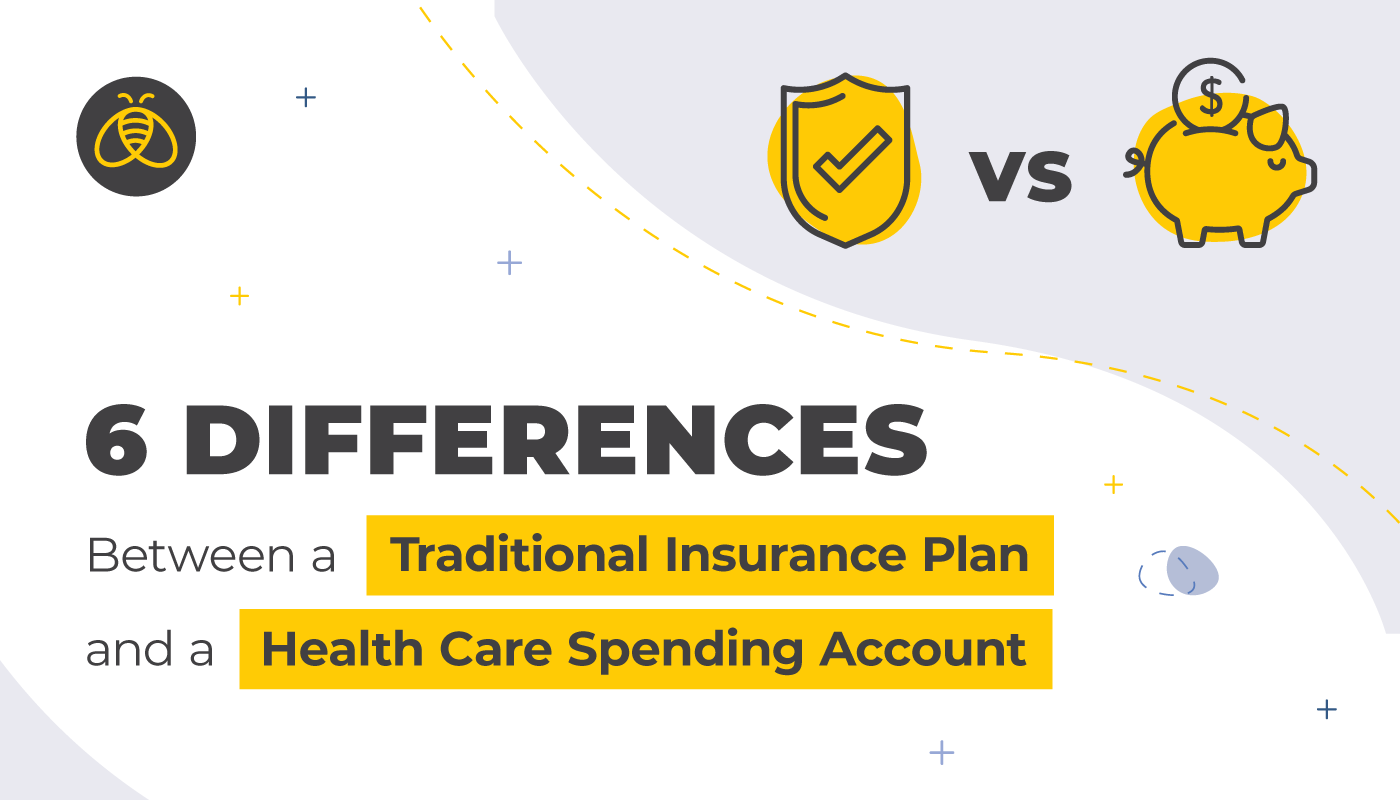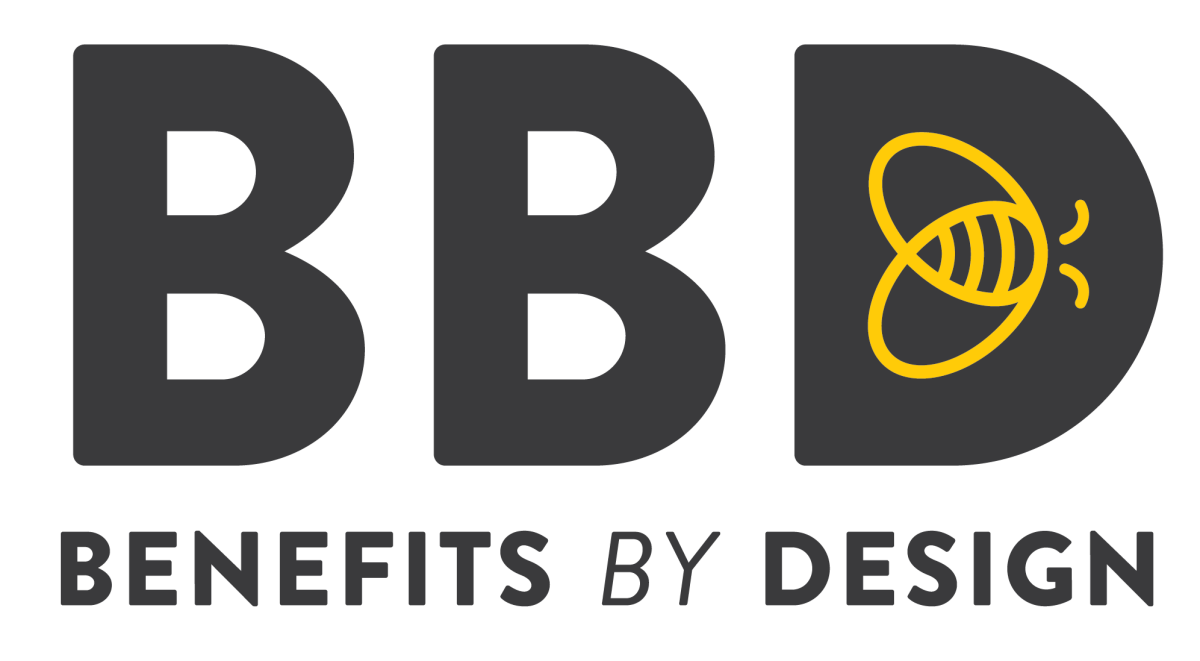6 Differences between a Traditional Insurance Plan and a Health Care Spending Account
By: Benefits by Design | Tuesday May 31, 2022
Updated : Tuesday April 22, 2025
Did you know that 94% of Canadian small businesses have employee benefits? That’s a lot of different industries, employers, and employees. But with so many varying coverage needs, it begs the question, what’s the difference between traditional insurance and Health Care Spending Accounts (HCSA)s?
Differences Between Traditional Insurance and Health Care Spending Accounts (HCSA’s)
The main purpose of both spending accounts and traditional insurance is to offer employees protection against medical expenses.
Traditional insurance is when an insurer provides coverage for a known risk, which may or may not occur, to a specific group of people. The plan sponsor (employer) pays monthly premiums to the insurer to provide this coverage. This type of insurance is also referred to as fully-insured benefits.
A spending account is a government-regulated allotment of funds that an employer provides to their employees for specific expenses.
Everything You Need to Know About Health Care Spending Accounts
Let’s take a look at the main differences between the two.
1. Premiums
A fully-insured benefits plan has billable monthly premiums, which are consistent month over month, unless there is a change in the number of employees. Premiums are calculated based on the expected usage of the plan and are due regardless of whether employees use the benefits plan or not.
There are no premiums for Health Care Spending Accounts (HCSA’s). Employers pay only when their employees make an eligible claim. They pay the amount of the claim plus applicable fees and commissions. This can mean inconsistent withdrawals each month for employee benefits.
2. Renewals
Each year, the insurers underwriters will look at a group’s claims experience and determine if they used the plan more or less than anticipated. In the simplest form, if the plan was utilized more than anticipated, there will be an increase in the rates and monthly premiums. If it was utilized less than anticipated, there will be a decrease. If the increase is too large, it can lead to plan design changes to mitigate the costs, which may or may not go over well with staff.
Everything Employers Need to Know About Group Insurance Underwriting
There is no such thing as a renewal when it comes to Health Care Spending Accounts (HCSA’s). This is because there is no way for employees to utilize the plan more than expected. Once they have been reimbursed for their total allotment amount for that year, they cannot be reimbursed further. This makes it very simple to calculate the exact amount an employer will spend on employee benefits each year. However, it does mean that employees who use their entire amount early on will not have access to benefits until they reset (usually on January 1).
3. Claims Processing and Reimbursement
A Health Care Spending Account (HCSA) is usually set up to provide coverage for all medical and dental expenses at 100% coverage. So, if an employee chooses to get the brand name drug, or go to a more expensive masseuse, that is their prerogative. There are also no limits to how much one can spend on a single item, or multiple of the same item. An employee could use the entire allotment on diabetes supplies if that was what they needed.
In a traditional insurance plan, there can be many factors which could mean only partial or no reimbursement.
- Annual Deductibles – if this is the first claim of the year, it could be subject to a deductible which would offset the reimbursement.
- Co-Insurance – if the plan is set up with 20% co-insurance, the plan member will only be reimbursed for 80% of the eligible expense.
- Annual and Lifetime Maximums – certain items have limitations that mean plan members can only be reimbursed up to that amount. For example, acupuncture services may be limited to $200 per year.
- Frequency Limits – plan members are restricted to purchasing these items once every specified number of years. For example, one can only purchase new spectacles once every 2 years for reimbursement.
What You Need to Submit Medical Claims Under a Group Insurance Plan
4. Eligible Expenses
Under a fully-insured benefits plan, insurers and plan sponsors can design a plan with very specific details.
On top of the above noted details regarding reimbursement, there can also be restrictions such as mandatory generic drugs or usual and customary amounts. There may also be prior authorizations required for certain expenses to be eligible, as well as requirements to sign up for provincial pharmacare programs where applicable.
Plan Sponsors can also choose to not include certain coverages, such as medical marijuana or gender affirmation coverage.
Dental plans are also a great example. Some plan sponsors will choose to provide only basic services such as cleaning, exams and cavity fillings. Others may choose to provide everything including orthodontic services.
Conversely, a Healthcare Spending Account (HCSA) has fewer limitations when it comes to what is eligible. As mentioned above, there are no frequency limits or maximums. As long as it is an eligible medical expense according to the CRA, it can be an eligible medical expense for an HCSA. This includes dental expenses.
List of Health Care Spending Accounts (HCSA) Eligible Expenses
Plan sponsors can choose to limit what eligible expenses they will cover. This is not often done because employers are providing the coverage in this manner so that employees have the flexibility to utilize their employer-sponsored benefits as they see fit.
5. High-Cost Claims Protection
A fully-insured plan most often comes with stop-loss protection. This can provide an employee who finds themselves burdened with a very high-cost medical expense (such as a high-cost cancer treatment plan or other chronic condition) with the coverage they need when they need it, while protecting the employer.
Spending Accounts work differently. The employee is able to use their full allotment towards their treatment, but once they have used it all, there is no more coverage. The employer is protected in this case because there is a limit to the allocation amount. However, it does mean that the employee will have to pay out-of-pocket for the majority of their treatment expenses.
6. Age Restrictions
There are no age restrictions for spending accounts. With employees retiring later and later, this could mean the ability to provide coverage to your more mature staff members.
A traditional insured plan has built-in termination ages for each benefit, which may or may not be the same. Once an employee attains that age, they are no longer eligible for coverage.
Providing employees with group benefits is more important than ever. How you do it is a matter of defining your goals and assessing the needs of your employees. By gaining insights into what your employees value in a benefits plan, you can make informed decisions on how best to set up your group benefits plan.


